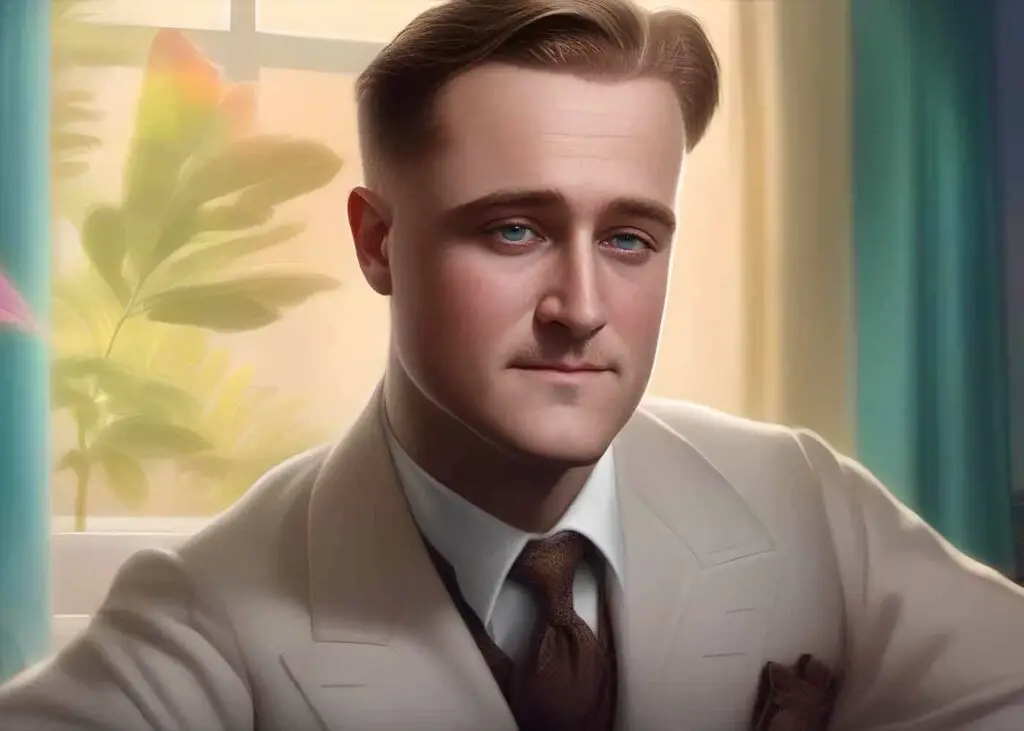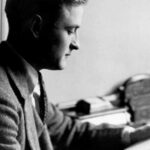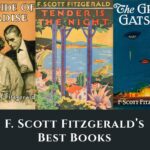
F. Scott Fitzgerald Works: A Comprehensive Guide
F. Scott Fitzgerald, an eminent figure in American literature, is best known for his vivid portrayal of the Jazz Age, a term he is credited with coining. Born on September 24, 1896, Fitzgerald rose to prominence as a literary voice of his generation, weaving tales that encapsulated the exuberance and disillusionment of the era.
Fitzgerald’s works comprise novels, short stories, essays, and letters that together paint a comprehensive picture of his literary journey. While The Great Gatsby is often the focal point of critical study due to its enduring relevance and exploration of the American Dream, his other works are instrumental in understanding the breadth of his talent. Among these, This Side of Paradise, The Beautiful and Damned, and Tender Is the Night further showcase his preoccupation with youth, wealth, and societal change.
The trajectory of Fitzgerald’s career was as tumultuous as the times he depicted, with personal struggles often influencing his work. Despite a relatively short life, passing away at the age of 44 in 1940, Fitzgerald’s contributions to literature have only grown in stature over time. His bibliography is not merely a showcase of narrative skill but also provides a historical lens through which the vibrancy and complexities of the early 20th century are witnessed.
Jump straight to F. Scott Fitzgerald Bibliography below.
1. Life and Career
F. Scott Fitzgerald, born Francis Scott Key Fitzgerald, made a significant impact on American literature with works that keenly captured the spirit of his age. His turbulent romance with Zelda Fitzgerald and his early death left a legacy that continues to resonate.
1.1. Early Life, Education and Literary Success
Francis Scott Key Fitzgerald was born on September 24, 1896, in St. Paul, Minnesota. He showed an early affinity for literature, writing, and acting in plays at St. Paul Academy. Fitzgerald attended Princeton University but never graduated, instead immersing himself in the university’s literary society and honing his craft as a writer.
In 1918, Fitzgerald met Zelda Sayre in Montgomery, Alabama, while he was stationed at a nearby Army camp. Their passionate and stormy relationship fuelled much of Fitzgerald’s writing. They married in 1920, the same year his first novel, This Side of Paradise, was published, catapulting them into the limelight. Fitzgerald’s first novel, This Side of Paradise, was an instant success and established his reputation as the voice of the “Lost Generation.” His short stories, such as “The Diamond as Big as the Ritz” and “Bernice Bobs Her Hair,” appeared in The Saturday Evening Post and cemented him as a notable author of the Jazz Age.
1.2. Later Years and Death
The later years of Fitzgerald’s life were marred by Zelda’s mental health issues and his alcoholism. His works during this period included Tender Is the Night and an unfinished novel, The Last Tycoon. Fitzgerald died of a heart attack on December 21, 1940, in Hollywood, California. After his death, Fitzgerald’s work gained a new level of recognition. The University of South Carolina houses an extensive collection of his works. The Great Gatsby, in particular, has become one of the most widely read novels in American literature.
1.3. Fitzgerald’s Legacy
Despite his relatively short life, Fitzgerald left an enduring legacy with his vivid depiction of the Jazz Age and his prescient critiques of the American Dream. His novels and short stories continue to be celebrated and studied across the globe. Fitzgerald’s bibliography includes classic novels like The Great Gatsby and The Beautiful and Damned as well as an extensive list of short stories. Many of his works have been adapted for film and television, reflecting their continued relevance and popularity.
2. Major F. Scott Fitzgerald Works and Publications
F. Scott Fitzgerald is celebrated for his brilliant exploration of the Jazz Age in his literature. His major novels remain classics, dissecting the American dream, wealth, and social dynamics with compelling characters and settings.
2.1. The Great Gatsby
The Great Gatsby, published in 1925, is heralded as Fitzgerald’s magnum opus. It conveys the story of the fabulously wealthy Jay Gatsby and his love for the beautiful Daisy Buchanan. Insightful and sharp, it encapsulates the decadence of the Roaring Twenties and the pursuit of the American Dream.
2.2. This Side of Paradise
This Side of Paradise, Fitzgerald’s debut novel released in 1920, skyrocketed him to fame. The novel follows the young and egotistic Amory Blaine as he grows up and faces the realities of adulthood. It reflects the disillusion of post-World War I youth and their hedonistic pursuits.
2.3. The Beautiful and Damned
In The Beautiful and Damned (1922), Fitzgerald delves into the destructive relationship between Anthony Patch and his wife Gloria. It is a cautionary tale of the young, attractive couple’s descent into indolence and moral decay as they await an inheritance.
2.4. Tender Is the Night
Published in 1934, Tender Is the Night explores the rise and fall of Dick Diver, a promising psychiatrist, and his wife, Nicole, a wealthier patient. This work addresses the themes of mental illness and the complexities of married life.
2.5. The Last Tycoon
The Last Tycoon, Fitzgerald’s final novel, was unfinished at the time of his death in 1940 and published posthumously the following year. It recounts the story of the film executive Monroe Stahr, a character based on the real-life movie producer Irving Thalberg, in old Hollywood.
6. Other Publications
Fitzgerald also produced an array of short stories, with “The Diamond as Big as the Ritz” being one of the most notable. Although not a novel, it renders a satirically exaggerated vision of wealth and American culture and complements his thematic exploration in his longer works.
Find out more about F. Scott Fitzgerald Best Books and F. Scott Fitzgerald Best Short Stories.
3. F. Scott Fitzgerald Bibliography
3.1. Novels
This Side of Paradise (1920)
The Beautiful and Damned (1922)
The Great Gatsby (1925)
Tender Is the Night (1934)
The Last Tycoon (1941) Unfinished
3.2. Short Story Collection
Flappers and Philosophers (1920)
Tales of the Jazz Age (1922)
All the Sad Young Men (1926)
Taps at Reveille (1935)
The Pat Hobby Stories (1962)
3.3. Play
The Vegetable; or, From President to Postman (1923)
3.4. Short Stories
Tarquin Of Cheapside (April 1917)
Porcelain And Pink (January 1920)
Head and Shoulders (February 21, 1920)
Benediction (February 1920)
Dalyrimple Goes Wrong (February 1920)
Mr. Icky (March 1920)
The Camel’s Back (April 24, 1920)
Bernice Bobs Her Hair (May 1, 1920)
The Ice Palace (May 22, 1920)
The Offshore Pirate (May 29, 1920)
The Cut-Glass Bowl (May 1920)
The Four Fists (June 1920)
May Day (July 1920)
The Jelly-Bean (October 1920)
The Lees Of Happiness (December 12, 1920)
Jemina (January 1921)
O Russet Witch! (February 1921)
The Curious Case of Benjamin Button (May 27, 1922)
The Diamond as Big as the Ritz (June 1922)
Winter Dreams (December 1922)
Dice, Brassknuckles, & Guitar (May 1923)
Hot and Cold Blood (August 1923)
Gretchen’s Forty Winks (March 15, 1924)
Absolution (June 1924)
The Sensible Thing (July 5, 1924)
The Baby Party (February 1925)
The Pusher-in-the-Face (February 1925)
Love in the Night (March 14, 1925)
The Adjuster (September 1925)
The Rich Boy (January/February 1926)
Presumption (January 9, 1926)
Rags Martin-Jones and the Pr-nce of W-les (July 1926)
Jacob’s Ladder (August 20, 1927)
A Short Trip Home (December 17, 1927)
The Bowl (January 21, 1928)
Magnetism (March 3, 1928)
The Scandal Detectives (April 28, 1928)
A Night At The Fair (July 21, 1928)
The Freshest Boy (July 28, 1928)
He Thinks He’s Wonderful (September 29, 1928)
The Captured Shadow (December 29, 1928)
Outside The Cabinet-maker’s (December 1928)
The Perfect Life (January 5, 1929)
The Last of the Belles (March 2, 1929)
Forging Ahead (March 30, 1929)
Basil and Cleopatra (April 27, 1929)
The Rough Crossing (June 8, 1929)
Majesty (July 13, 1929)
At Your Age (August 17, 1929)
The Swimmers (October 19, 1929)
Two Wrongs (January 18, 1930)
First Blood (April 5, 1930)
A Nice Quiet Place (May 31, 1930)
The Bridal Party (August 9, 1930)
A Woman With A Past (September 6, 1930)
One Trip Abroad (October 11, 1930)
A Snobbish Story (November 29, 1930)
The Hotel Child (January 31, 1931)
Babylon Revisited (February 21, 1931)
A New Leaf (July 4, 1931)
Emotional Bankruptcy (August 15, 1931)
Between Three and Four (September 5, 1931)
A Freeze-Out (December 19, 1931)
Six of One (February 1932)
Flight and Pursuit (May 14, 1932)
Family In The Wind (June 4, 1932)
What a Handsome Pair! (August 27, 1932)
Crazy Sunday (October 1932)
One Interne (November 5, 1932)
On Schedule (March 18, 1933)
More Than Just a House (June 24, 1933)
The Fiend (January 1935)
The Night At Chancellorsville (Feb 1935)
Shaggy’s Morning (May 1935)
Too Cute for Words (April 18, 1936)
Three Acts of Music (May 1936)
The Ants at Princeton (June 1936)
Afternoon of an Author (August 1936)
I Didn’t Get Over (October 1936)
An Alcoholic Case (February 1937)
The Long Way Out (September 1937)
The Guest in Room Nineteen (October 1937)
Financing Finnegan (January 1938)
Design In Plaster (November 1939)
The Lost Decade (December 1939)
Strange Sanctuary (December 1939)
Three Hours Between Planes (July 1, 1941)
News Of Paris – Fifteen Years Ago (Winter 1947)
That Kind of Party (Summer 1951)
Check out free F. Scott Fitzgerald books at PageVio.




